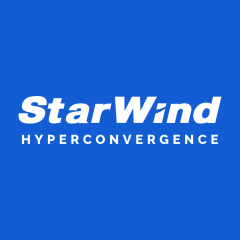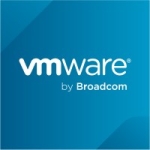We were using traditional physical storage for our environment, and it was costly for us. On top of that, the performance was not satisfactory. We started using the StarWind vSAN for virtual storage.
It is cost-effective and has amazing features. The capacity to scale assets to address changing issues and upgrade execution contrasted with conventional capacity arrangements and therefore is another positive aspect when utilizing StarWind Virtual SAN.
Utilizing the StarWind Virtual SAN gave us a more steady and adaptable arrangement. I noticed a persistent upgrade in the functionalities of the StarWind Virtual SAN, so its development is great.
We were facing issues with high availability and the integration of virtualization platforms then we started using StarWind vSAN to help us improve the high availability and the integration with the virtualization platform.
StarWind Virtual SAN permitted me to have extraordinary adaptability in making an exceptionally basic framework, where I could gather total independence over vSAN, yet connect it so that it was fit for working with the VMware Hypervisor. That way, I had a more powerful and dependable framework.
The high availability features helped with storage availability 24/7.
Integration with virtualization platforms helped us to resolve many issues we were facing while using the physical storage.
StarWind Virtual SAN is great for a financially savvy arrangement if you're utilizing Hyper-V or VMware.
Thanks to a simple execution, you can save your expenses and convey the product with your inner sources with the help of a merchant.
The onboarding is effortless. Setting up and designing the Virtual SAN is clear, with an easy-to-use interface that makes it simple to oversee and screen the capacity climate.
We have an elite execution. StarWind Virtual SAN can convey quick, dependable capacity for virtual machines. Its abiluty to use nearby capacity as a component of a profoundly accessible capacity group assists with guaranteeing superior execution.
The platform needs to improve user management and the web console.
Improved help for more up-to-date advancements would be ideal. As fresher innovations and guidelines arise, it tends to be provoking programming suppliers to keep up.
While StarWind Virtual SAN, by and large, works effectively to support the most recent advancements, there might be a few regions where it lingers behind the opposition. Further developing help for fresher advances could assist the product with remaining cutthroat and pertinent.
Upgraded investigating capacities are needed. While the product incorporates a scope of symptomatic and investigating devices, there might be a few regions where it very well may be gotten to the next level. For instance, giving more nitty gritty mistake messages or better direction on the most proficient method to determine issues could be useful for clients.
I have been using the StarWind vSAN solution for the last six months and I found this product exceptional and amazing for virtual storage.















